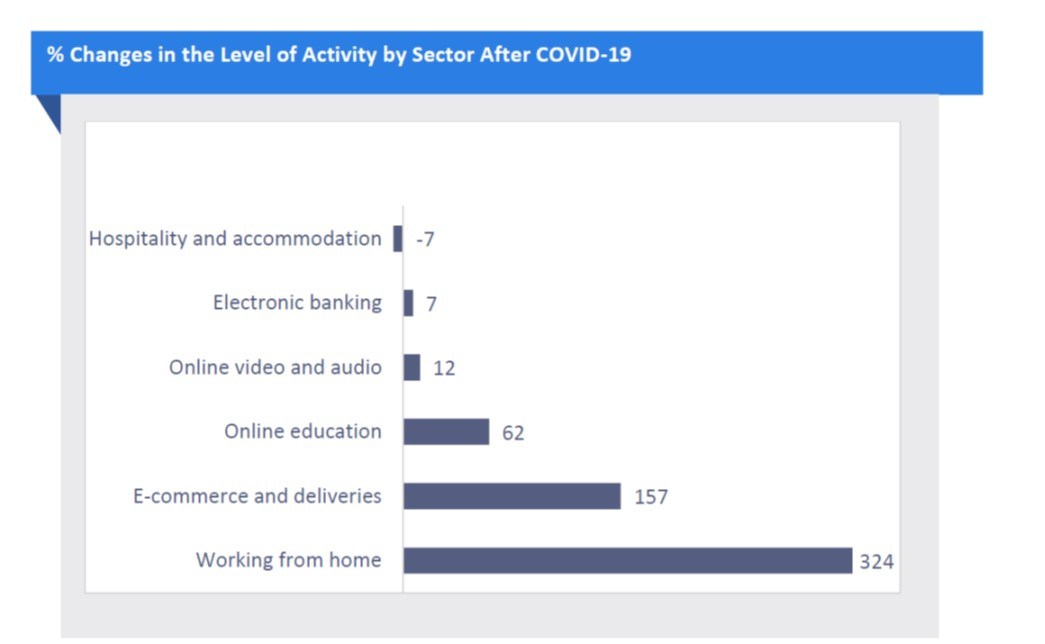6th October 2020
Background Information
Digital technologies are essential in order for the economy and society for functioning during the current COVID-19 pandemic crisis. However, limited access to communications technologies hinders social inclusion in the villages furthest away from large city centres, which exacerbates the digital divide that was already present:
The impact of the COVID-19 crisis has cut through all the productive sectors of society, speeding up the processes for digitising work and basic services Source: Spanish Chamber of Commerce: An Initiative for Digital Transition.

Between the first and second quarter of 2020, the use of solutions of working from home went up by 324% and of online education, by more than 60%.
With regard to basic services for the population, health and education have been greatly affected by this crisis, which has started a public debate about the need to reinforce both systems through increased use of digital tools:
Therefore, it is essential for the problem of the digital divide to be dealt with in order to ensure that these basic services are offered to the whole population in the same way.
The Role of Satellites
Satellite technology is able to bridge this divide thanks to its intrinsic characteristics of universal coverage as well as quick and network deployment.
HISPASAT has adapted its solution portfolio to these needs in order to promote the use of technology to provide basic services to the whole community in a fair way.
HISPASAT Solutions Against COVID
Emergency Services to Help Manage the COVID-19 Crisis
The fight against the virus calls for Governments, companies and the public to cooperate and work together. In many cases, this means that the emergency networks which are currently available must be reinforced and extended. Some of the HISPASAT solutions in this field are:
Rural Connectivity
Satellite technology has made significant progress, allowing it to provide a competitive connectivity service which has higher quality thanks to the use of the Ka frequency band and HTS technology.
Satellites are able to offer residents broadband connectivity in a network and efficient way, therefore contributing to bridge the digital divide. Furthermore, users are guaranteed to have Internet access regardless of their geographic location. The HISPASAT portfolio in this sphere includes:
Telemedicine Solutions and Digitising Education
In the field of telemedicine, HISPASAT has added a service to its portfolio which aims to provide access for residents to primary health care services, as well as to provide specialist care without health professionals having to travel to rural areas. Features of this service include:
Paving the Way for a Digital Future After the COVID Crisis
The crisis resulting from the coronavirus disease has accelerated the need for a digital transition in the sectors, means and services which are fundamental for the development of society. In this respect, satellites can help provide tools which promote access to digital means and services for 100% of the population.
The world has changed and we are faced with significant challenges which will allow us to not only overcome this crisis, but come out stronger as a society. At HISPASAT, we are committed to helping, using all the means we have, to do what we are best at: promote access to connectivity and digital technologies for everyone.